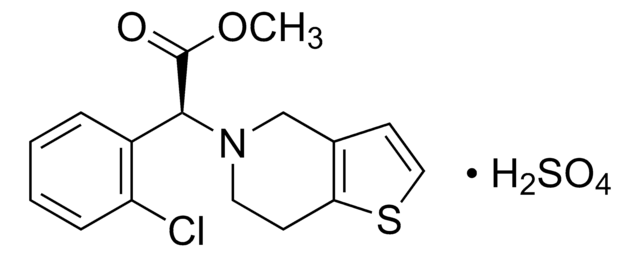C0414
Clidinium bromide
analytical standard
Synonym(s):
3-Hydroxy-1-methylquinuclidinium bromide benzilate, 3-[(Hydroxydiphenylacetyl)oxy]-1-methyl-1-azoniabicyclo[2.2.2]octane bromide
Select a Size
About This Item
Recommended Products
grade
analytical standard
Quality Level
technique(s)
HPLC: suitable
gas chromatography (GC): suitable
application(s)
forensics and toxicology
pharmaceutical (small molecule)
veterinary
format
neat
SMILES string
Br.C[N]12CCC(CC1)C(C2)OC(=O)C(O)(c3ccccc3)c4ccccc4
InChI
1S/C22H26NO3.BrH/c1-23-14-12-17(13-15-23)20(16-23)26-21(24)22(25,18-8-4-2-5-9-18)19-10-6-3-7-11-19;/h2-11,17,20,25H,12-16H2,1H3;1H
InChI key
WVDSMJSQJXGCNY-UHFFFAOYSA-N
Looking for similar products? Visit Product Comparison Guide
Related Categories
General description
Application
signalword
Warning
hcodes
Hazard Classifications
Acute Tox. 4 Oral
Storage Class
11 - Combustible Solids
wgk_germany
WGK 3
flash_point_f
Not applicable
flash_point_c
Not applicable
ppe
dust mask type N95 (US), Eyeshields, Faceshields, Gloves
Choose from one of the most recent versions:
Certificates of Analysis (COA)
It looks like we've run into a problem, but you can still download Certificates of Analysis from our Documents section.
If you need assistance, please contact Customer Support.
Already Own This Product?
Find documentation for the products that you have recently purchased in the Document Library.
Active Filters
Our team of scientists has experience in all areas of research including Life Science, Material Science, Chemical Synthesis, Chromatography, Analytical and many others.
Contact Technical Service









